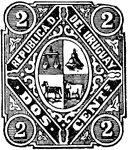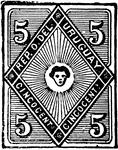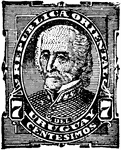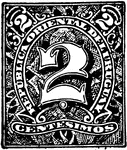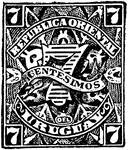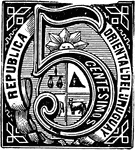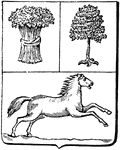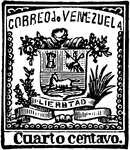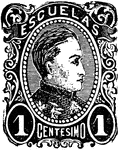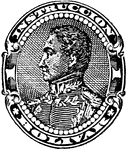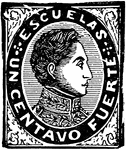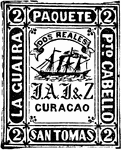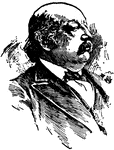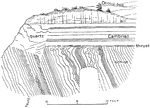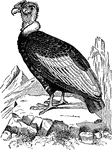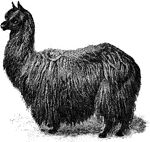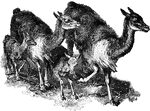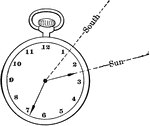
Watch Compass
"If a compass is not available, a watch can be used. Hold the watch flat in the hand and with the hour…

Wind Movement
The image "shows the path of a body starting northward from any point O in the northern hemisphere and…
South American Lungfish
"Lepidosiren showing (Pc.f.) pectoral fin and the tufted pelvic fin (Pv.f.) of the mature male." -Thomson,…
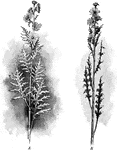
Compass Plant
"Leaves standing nearly vertical in compass-plant. (Silphium laciniatum). A, view from east or west;…
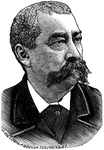
Philip H. Sheridan
A portrait of Philip H. Sheridan. With his career in the U.S Army, Sheridan rapidly rose to become general…
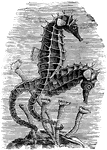
The Sea horse
The Sea horse is a remarkable fish found near our South American coasts. It belongs to the singular…
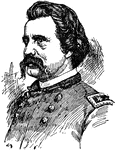
John Alexander Logan
(1826-1886) American soldier and statesman who fought in the Mexican War. US Senator from Illinois.

George Gordon Meade
(1815-1872) American soldier in the Mexican War and Union general in the Civil War.
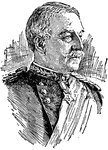
Nelson Appleton Miles
(1839-1925) American soldier and general in the Civil War, Indian Wars, and the Spanish-American War.
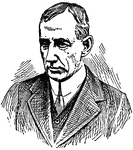
Roald Amundsen
(1872-1928) Norwegian explorer most famous for first reaching the North and South Poles.

Basalt
"Columnar structure in the basalt of the main sheet, south end of East Hill Cliff, near South Britain,…
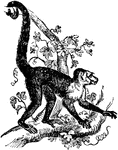
Capuchin Sapajou
The name generally given to a group of South American prehensile-tailed monkeys, including fifteen or…
Renascence Sideboard
Renascence sideboard from St. Lo, Normandy, 1580, now in the South Kensington Museum.
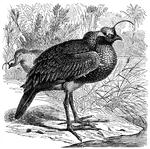
Horned Screamer (Palamedea Cornuta)
The Screamers are inhabitants of South America. They live isolated, in pairs, and are mild and peaceful…
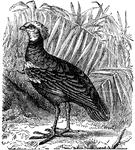
Faithful Kamichi, or Crested Screamer
The Screamers are inhabitants of South America. They live isolated, in pairs, and are mild and peaceful…
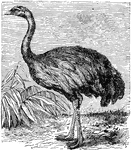
The Rhea
Also called the American Ostrich. "It inhabits the pampas of South America and the coolest valleys in…

Brazilian Motmot
"The Motmots ... are very wild, and lead an isolated life in the thick forests of South America."
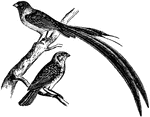
Whidah-Birds
"The Whidah-Birds have long, drooping tail feathers. They are natives of South Africa and Senegal."
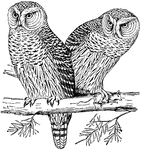
The Hawk or Canada Owl
"The Hawk-Owl is especially well known in Canada. This bird goes as far south as Louisiana."

Lantern Fly (Fulgora Lanternaria)
"The Lantern-fly is found in large numbers in South America. This remarkable insect enjoys a great renown…

Longleaf Pine (Pinus palustris Mill.). Open cone, natural size.
The longleaf pine has a type of pine cone that is large, open and commonly found in the South Atlantic…

Longleaf Pine (Pinus palustris Mill.). Two-thirds natural size. Branch with terminal bud
The longleaf pine commonly found in the South Atlantic and Gulf States. The longleaf pine branch has…
Longleaf Pine (Pinus palustris Mill.). Two-thirds natural size. Leaf bundle.
The longleaf pine commonly found in the South Atlantic and Gulf States. The leaves come 3 in a bundle,…
Longleaf Pine (Pinus palustris Mill.). Two-thirds natural size. Primary leaf bracts (magnified)
The longleaf pine commonly found in the South Atlantic and Gulf States. The leaves are 9 to 12 inches…

Longleaf Pine (Pinus palustris Mill.). Two-thirds natural size. cross sections (magnified) of leaves.
The longleaf pine commonly found in the South Atlantic and Gulf States. The leaves are 9 to 12 inches…

Longleaf Pine (Pinus palustris Mill.). Two-thirds natural size. cross sections (magnified) of leaves.
The longleaf pine commonly found in the South Atlantic and Gulf States. The leaves are 9 to 12 inches…
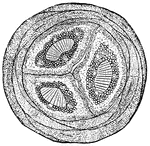
Longleaf Pine (Pinus palustris Mill.). Two-thirds natural size. cross sections (magnified) of leaves.
The longleaf pine commonly found in the South Atlantic and Gulf States. The leaves are 9 to 12 inches…
Longleaf Pine (Pinus palustris Mill.). Two-thirds natural size. epidermis of leaf (magnified)
The longleaf pine commonly found in the South Atlantic and Gulf States. The leaves are 9 to 12 inches…

Cuban pine (pinus cubensis Griseb.). Two-thirds natural size. closed cone
The Cuban pine, which occurs mostly in the West Indies and South America, as well as the Gulf States…

Cuban pine (pinus cubensis Griseb.). Two-thirds natural size. open cone
The Cuban pine, which occurs mostly in the West Indies and South America, as well as the Gulf States…
Cuban pine (pinus cubensis Griseb.). Two-thirds natural size. apophyses
The Cuban pine, which occurs mostly in the West Indies and South America, as well as the Gulf States…

Cuban pine (pinus cubensis Griseb.). Two-thirds natural size. cone scales, dorsal view
The Cuban pine, which occurs mostly in the West Indies and South America, as well as the Gulf States…

Cuban pine (pinus cubensis Griseb.). Two-thirds natural size. cone scales, ventral view
The Cuban pine, which occurs mostly in the West Indies and South America, as well as the Gulf States…

Cuban pine (pinus cubensis Griseb.). Two-thirds natural size. seed
The Cuban pine, which occurs mostly in the West Indies and South America, as well as the Gulf States…
Cuban pine (pinus cubensis Griseb.). Two-thirds natural size. seed wings dorsal view
The Cuban pine, which occurs mostly in the West Indies and South America, as well as the Gulf States…
Cuban pine (pinus cubensis Griseb.). Two-thirds natural size. seed wings ventral view
The Cuban pine, which occurs mostly in the West Indies and South America, as well as the Gulf States…

Saltwort (salsola kali var. tragus).
The saltwort is a native of the U.S. growing along the sandy seashore from New England south to Georgia.…

Antlion
"A very beautiful species of the ant-lion is to be found in the climate which characterizes the south…
